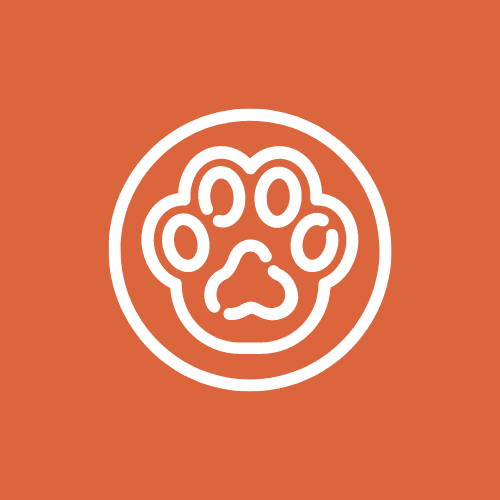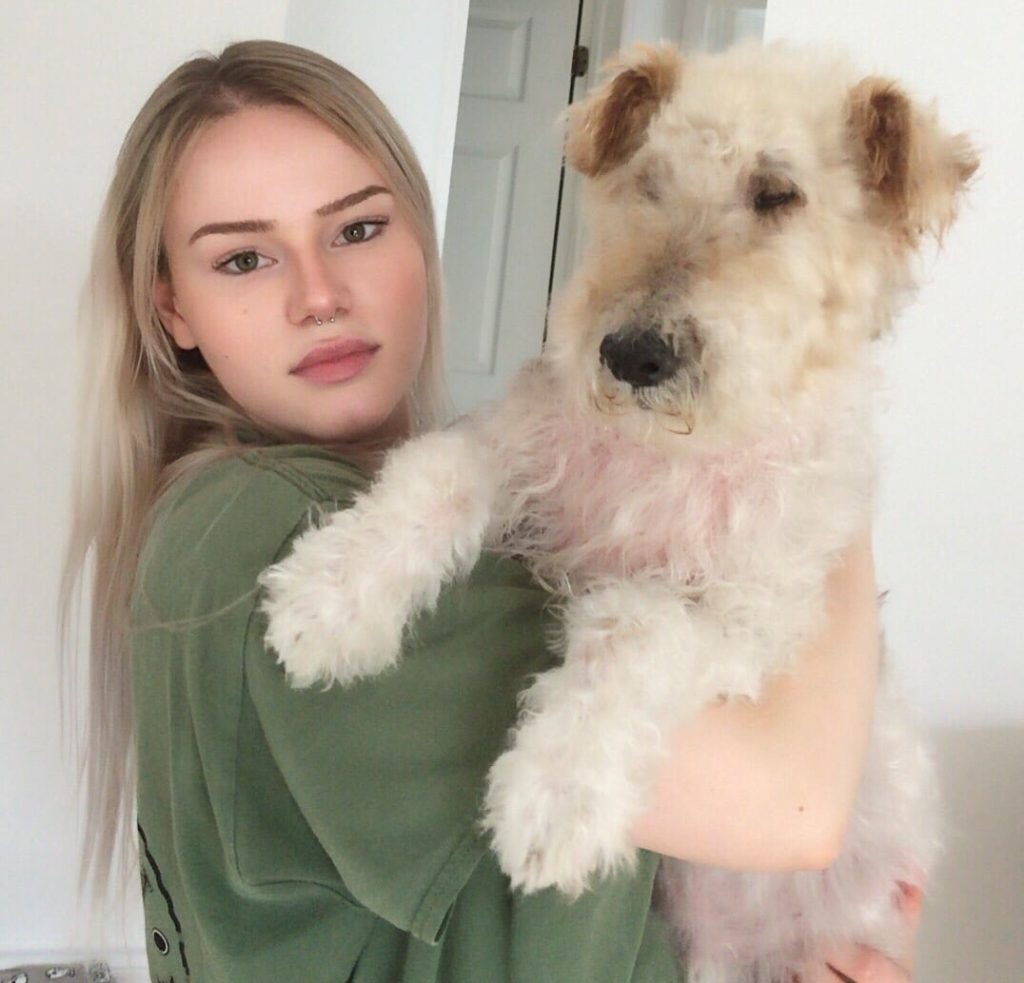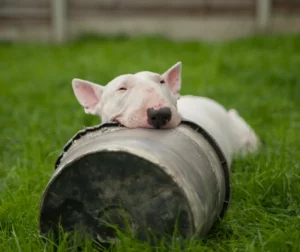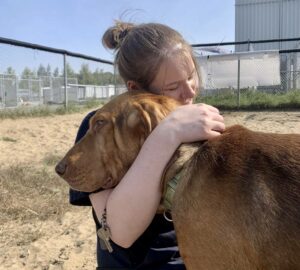Muzzle use is a topic that causes a lot of controversy among dog owners. It’s completely understandable if you fear the social judgment associated with having your dog wear this training tool. You may worry that passers-by will perceive your furry friend as dangerous or misbehaved. However, the reality is much more nuanced. The muzzle, far from being a simple symbol of a behavioral problem, is above all a safety tool. It protects not only the public and the owner but also the dog itself.
This article aims to explore the reasons for using a muzzle, present the different types of muzzles available, and detail the training methods to properly introduce a muzzle to a dog.
Why Use a Muzzle?
1. Prevention of bites and injuries
It is mainly used to prevent a dog from biting or injuring someone. Biting is a natural defense for dogs, which they can use in cases of extreme pain or severe stress. Even the most docile dog can become unpredictable when injured or frightened and unable to escape a stressful situation.
2. Safety during handling
During visits to the vet, it can be used to protect staff and the dog. If a dog feels pain or is subjected to uncomfortable handling, it may react with biting. By gradually introducing your dog to wearing it, you reduce the additional stress associated with this situation.
3. Behavior management in stressful situations
Dogs experiencing a build-up of stress and who cannot escape may use biting to protect themselves. This training tool allows the pet parent to manage these situations safely, especially in unfamiliar environments or when encountering other animals or humans.
4. Prevention of consumption of dangerous objects
It can prevent a dog from finding and swallowing potentially dangerous objects during walks. This includes toxic substances, waste, or sharp objects.
5. Encouraging safe socializing
For dogs in the process of socialization or those with a history of aggression, this training tool allows interaction with other dogs and people in a controlled manner. This helps reduce risks while working on social behaviors.
6. Preventing wound licking
The vet may recommend the use of a muzzle to prevent the dog from licking its wounds, thus promoting better healing.
7. Responsibility and security
Having your dog wear this training tool shows a great sense of responsibility. This demonstrates that the owner is aware of their pet’s potential behaviors and is taking steps to prevent any unfortunate accidents. Additionally, in some areas, the law requires certain dog breeds to wear a muzzle in public places.
How to Choose the Right Muzzle?
When it comes to choosing a muzzle for your dog, it is important to consider the type of muzzle, its material, and its intended use. It must be the right size to allow your dog to breathe, drink, and pant without difficulty. A poor fit can cause discomfort and anxiety.
Each type of muzzle has its advantages and disadvantages and is suitable for different contexts. Here is a detailed overview of the main types and their recommended uses:
– Nylon Muzzle
Function and use: Commonly used by groomers and vets for short-term procedures, such as nail trimming, anesthesia, or blood draws.
Advantages: It is inexpensive and easy to set up.
Disadvantages: It does not allow the dog to drink, open its mouth, or pant, which can be problematic in cases of heat or shortness of breath. Use only for short periods.
– Plastic Basket Muzzle
Function and use: Ideal for prolonged use and for walks or situations where a muzzle is required by legal obligation.
Advantages: The dog can drink, pant, open its mouth and get treats. Offers great freedom and comfort to the dog.
Disadvantages: Some plastic versions may lack sturdiness for particularly strong or persistent dogs.
– Metal Mesh Muzzle
Function and use: Recommended for dogs requiring a very sturdy muzzle, particularly those with destructive behavior.
Advantages: Very robust and durable, allows good ventilation, and the dog can drink, pant, and get treats.
Disadvantages: Can be heavy and less comfortable. In the event of a collision, there is an increased risk of injury to other dogs or humans.
– Leather Muzzle
Function and use: Often used for dogs requiring a comfortable muzzle for longer periods.
Advantages: Very comfortable, can be tailor-made to adapt perfectly to the dog’s morphology. Aesthetic and durable.
Disadvantages: More expensive and may require regular maintenance to preserve the leather.
How to Introduce the Muzzle to Your Dog?
Introducing this training tool to your dog requires patience and positive reinforcement to avoid any negative associations. Train your dog to carry it easily before using it for walks or any other activities. Here is a detailed guide to help you gradually train your dog to wear it comfortably.
Before you begin, it is crucial to monitor your dog’s body language to avoid any negative emotions towards the tool. Here are some signs of stress to watch for:
- Avoiding eye contact or looking away
- Whites of their eyes showing (whale eye)
- Attempted escape
- Nose licking
- Body stiffness
- Ears pinned back
If your dog shows signs of stress, go back to the previous step, proceed more gradually, increase the distance between you and him, or use more tempting treats like dried liver, chicken, cheese, or sausage.
*Never force your dog to wear the muzzle or any other accessory.*
Steps to Training Your Dog to Love Wearing a Muzzle
Step 1: Show your dog the muzzle and give him a tempting treat. Hide the muzzle for a few seconds, then start again. Repeat until your dog associates the sight of the muzzle with something positive.
Step 2: Pass a treat through it and reward your dog as soon as he touches the muzzle on his own. This step aims for him to associate the contact with something positive.
Step 3: Present the muzzle and pass a treat through it to encourage your dog to put his nose into it on his own. Reward him when he puts his nose in it. Repeat this step at least 10 times and make sure he willingly puts his nose there at least 9 out of 10 times before moving on to the next step.
Step 4: Put the muzzle on without attaching it completely, then reward immediately. Remove the muzzle and stop rewarding. Repeat until your dog is comfortable.
Step 5: Attach it loosely for a few seconds, then reward. Remove the muzzle and stop rewarding.
Step 6: Attach it more snugly for a few seconds, then reward. Remove the muzzle and stop rewarding. Repeat until your dog is comfortable.
Step 7: Adjust it properly and leave it on your dog’s nose for a few seconds, then reward. Remove it and stop rewarding.
Step 8: Adjust the muzzle, leave it in place, and scatter large pieces of treats on the ground so they are easily reachable for your dog. Let your dog move around to pick them up. When he takes the last treat from the ground, remove the muzzle. The goal of this step is to teach your dog to move around with it on. If this step is too difficult, place the treats in front of him, then scatter them further and further away.
Step 9: Put on the muzzle for very short walks offering lots of treats. Gradually increase the duration of walks while continuing to reward your dog.
Continuous Progression and Training
- Continue to associate it with positive experiences, such as games or tricks learning. This helps your dog see this tool as an enjoyable part of their routine.
- Practice these steps regularly to reinforce the positive association with the tool and avoid any negative associations.
These articles might interest you:







